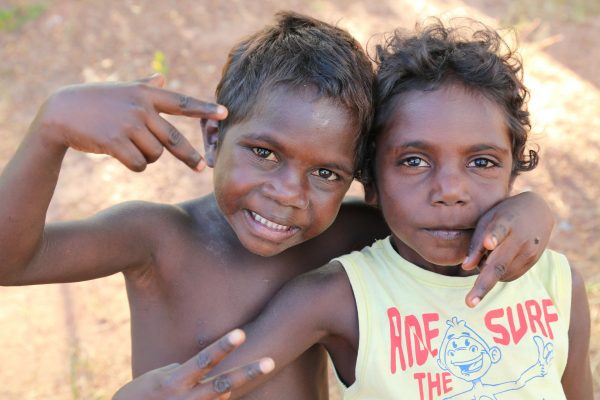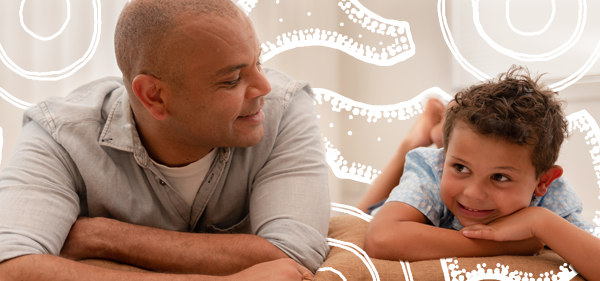Hearing Australia aims to halve the rate of hearing loss in First Nations children by 2029

Hearing Australia recently launched the Hearing Australia Action Plan for Improving Ear Health and Hearing Outcomes for Aboriginal and Torres Strait Islander Children, which outlines how Hearing Australia will work with its partners to halve the rate of hearing loss in Aboriginal and Torres Strait Islander children by 2029.
Chronic otitis media (inflammation and infection of the middle ear) is far more frequent and serious in Aboriginal and Torres Strait Islander children compared to non-Indigenous children.
One in three Aboriginal and Torres Strait Islander children experience this disease, making it difficult for them to hear, learn and yarn. Studies show Aboriginal and Torres Strait Islander children experience up to 32 months of conductive hearing loss, compared to just three months among non-Indigenous children.
Hearing loss in a child’s early developmental years can delay speech and language development, contributing to greater inequality in education, employment, and overall health outcomes. The most recent National Aboriginal and Torres Strait Islander Health Survey found some 30 per cent of Aboriginal and Torres Strait Islander school-aged children had a measured hearing loss in one or both ears.
Aligned to the objectives of the National Agreement on Closing the Gap, the action plan demonstrates Hearing Australia’s commitment to ensuring Aboriginal and Torres Strait Islander communities are empowered to share decision-making about how services are delivered, and builds on the existing work of the organisation and its partners.
“Implementing this Action Plan is crucial to help reduce the rate of hearing loss in First Nations children,” explained Kim Terrell, Hearing Australia’s Managing Director. “It was co-designed with Aboriginal and Torres Strait Islander health care experts and sets out the actions that Hearing Australia will take, in collaboration with its partners, to improve the ear health of First Nations children.”
Earlier hearing aid fittings
The work of Hearing Australia’s First Nations Services Unit, established in 2021, is showing positive results in improving ear health and hearing outcome results, but there is more work to be done.
According to research from the Unit, there has been a reduction in the age Aboriginal and Torres Strait Islander children are receiving hearing aids. Today, one in five First Nations children who need hearing aids receive them before the age of three – a significant improvement from the one in 20 children in 2008.
Wiradjuri woman and Hearing Australia Acting National Manager Stakeholder Relations, First Nations Services Unit, Sherilee McManus, says the specialist Unit is helping to address the hearing gap.
“Many of the children and adults we see have very complex needs, which means they require specialised services,” she explained.
“Because of the relationships we’ve forged with a range of partners, including peak bodies, health and education services and ear health stakeholders, we’re able to provide these specific services, to pick up hearing problems sooner and to fast-track treatment and rehabilitation.”
Parents and preschool working together
Samantha Smith, mother of six-year-old Maisie, said that the help provided to her daughter through Hearing Australia has made a significant difference to her development.
“Maisie’s preschool and I noticed that she had a speech delay and that she wasn’t really listening. I had to raise my voice when speaking to her and she looked more for facial cues and would constantly want the TV volume up too loud. We got her hearing checked through Hearing Australia which confirmed she had a hearing loss. A subsequent hearing check confirmed that it was continuing to decline and she was fitted with a hearing device.
“The hearing device has been a godsend for Maisie. She wears it every day and it has made a noticeable difference to her hearing in all situations, and it has really helped with her development. The entire process with Hearing Australia has been very positive. Maisie and I have been made to feel so comfortable right from the beginning and the staff are so friendly and efficient,” Ms Smith added.
Ongoing and wrap around support
In the 2021-22 financial year, Hearing Australia supported some 23,000 Aboriginal and Torres Strait Islander peoples with their hearing needs. Around half were young children assessed under the government-funded Hearing Assessment Program – Early Ears (HAPEE), with around one in four requiring referral to specialist services.
The Action Plan also builds on the success of a suite of existing programs for eligible Aboriginal and Torres Strait Islander peoples, which are fully subsidised by the Australian Government. They include:
- hearing services and devices, provided through the Community Service Obligations component of the Hearing Services Program
- free* hearing checks for young children aged 0-6 not yet attending full time school as well as upskilling and supporting local services to identify ear and hearing problems and refer to specialist services, provided through the HAPEE (Hearing Assessment – Early Ears) and Listen to Learn programs.
To view Hearing Australia’s Action Plan to improve the ear health and hearing outcomes for Aboriginal and Torres Strait Islander children, please see here.
Popular

Practice
Provider
Quality
Research
Workforce
New activity booklet supports everyday conversations to keep children safe
2025-07-10 09:00:16
by Fiona Alston

Quality
Practice
Provider
Workforce
Reclaiming Joy: Why connection, curiosity and care still matter in early childhood education
2025-07-09 10:00:07
by Fiona Alston

Quality
Practice
Provider
Research
Workforce
Honouring the quiet magic of early childhood
2025-07-11 09:15:00
by Fiona Alston












